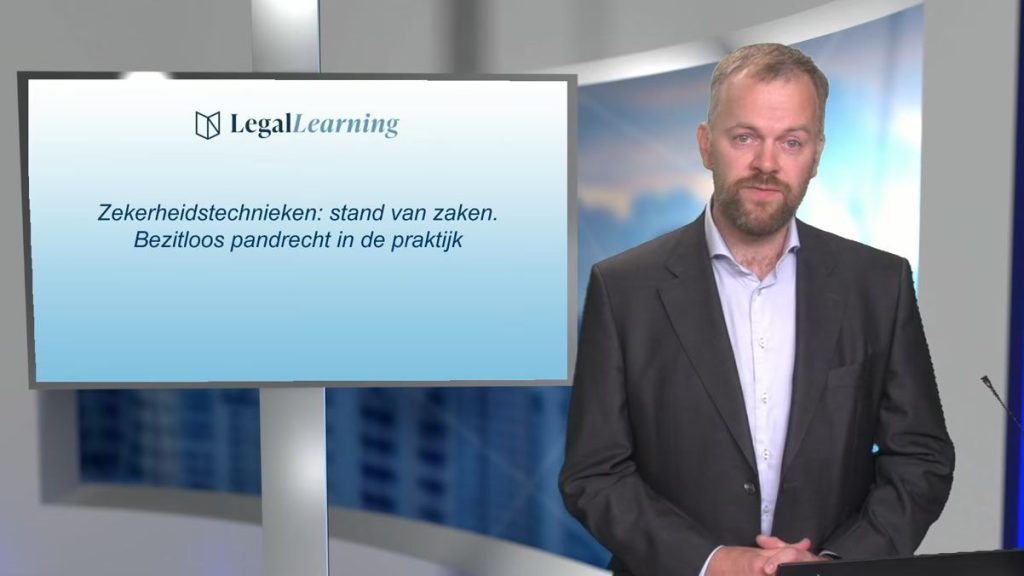Faillissementsrecht:
recente wetgeving én rechtspraak anno 2024
Mr. Ilse van de Mierop en mr. Charlotte Sas (DLA Piper)
Webinar op vrijdag 6 december 2024
Het nieuwe Boek 6:
de impact op de werkvloer
Mr. Chris Persyn (Cautius)
Webinar op donderdag 4 juli 2024
Aandeelhoudersovereenkomsten
in het licht van de nieuwe wetgeving
Mr. Michaël Heene (DLA Piper)
Webinar op vrijdag 31 mei 2024
Zekerheden: een update
aan de hand van wetgeving en rechtspraak
Mr. Ivan Peeters en mr. Philip Van Steenwinkel (Hogan Lovells)
Webinar op vrijdag 8 november 2024
Is the end of judicial reorganisation through a court-supervised transfer in sight? (Laga)
Authors: Jürgen Egger, Glenn Hansen en Sophie Maas (Laga)
Publication date: 31/02/2019
With the Law of 11 August 2018, the Law on the Continuity of Enterprises (LCE) (and the Bankruptcy Law) were incorporated in Book XX of the Belgian Economic Code (BEC).
During this codification, the provisions regarding the ‘LCE 3’- procedure were taken verbatim in the new Book XX BEC. The ‘LCE 3’-procedure is a judicial reorganisation through a transfer of an enterprise or (part) of its activity under court supervision.
This procedure allows interested buyers to ‘cherry pick’ employees from the enterprise in reorganisation, without the obligation to take over the complete workforce (former article 61, §4 LCE, current article XX.86, §3 BEC).
This procedure has come under increased scrutiny from the Court of Justice of the European Union (CJEU) and is looking to be officially on its last legs.
The initial warning
In the initial Bill of 20 April 2017 for the introduction of Book XX BEC, a ‘silent’ pre-bankruptcy phase was proposed. During such a ‘silent’ bankruptcy phase, the bankrupt company would be assisted by a pre-liquidator, tasked with the enterprise’s preparation for bankruptcy, before having to notify its creditors (and employees).
The ‘silent’ bankruptcy was modelled after the existing Dutch ‘pre-pack’ procedure.
However, in a preliminary ruling of 22 June 2017, the CJEU held that such a ‘pre-pack’ is aimed at the enterprise’s continuity and is not aimed at bankruptcy or liquidation. Therefore, the ‘pre-pack’ cannot rely on the exception of article 5 of the Directive 2001/23/EC on the safeguarding of employees’ rights in the event of transfers of activities, businesses, or parts thereof (the Directive), making articles 3 and 4 of the Directive applicable. More concretely, this entails that all employees would need to be transferred along with the company or its assets, leaving no possibility to choose the employees or change the conditions of their contract for the transferee.
This ruling made the introduction of the ‘silent’ bankruptcy in Belgium obsolete; the whole mechanism was consequently dropped. However, industry professionals already suspected that, following the reasoning in this judgment, the ‘LCE 3’- procedure would likely not survive closer examination by the CJEU either.
Preliminary question regarding article 61 §4 LCE (XX.86, §3 BEC)
On 21 August 2017, two months after the abovementioned judgment, the Antwerp labour court of appeal submitted a preliminary question to the CJEU on whether article 61 §4 LCE/XX.86, §3 BEC is indeed incompatible with articles 3-5 of the Directive.
Advocate General’s 23 January 2019 conclusion
The Advocate General’s conclusion follows the traditional reasoning regarding employees’ rights in case of an enterprise’s transfer:
- Pursuant to article 3 of the Directive, the transferor’s rights and obligations arising from a contract of employment on the date of transfer will, by reason of such transfer, be transferred to the transferee;
- Pursuant to article 4 of the Directive, the transfer of an activity will not in itself constitute grounds for dismissal by the transferor or the transferee;
- Pursuant to article 5 of the Directive, articles 3 and 4 do not apply to any transfer where the transferor is the subject of:
- Bankruptcy proceedings or any analogous insolvency proceedings;
- Which have been instituted with a view to the liquidation of the transferor’s assets; and
- Are under the supervision of a competent public authority.
The Advocate General refers to the CJEU’s judgment of 22 June 2017, which states that despite the pre-pack being an insolvency procedure, it does not fulfil the requirement that it must ‘be instituted with a view to the liquidation of the assets of the transferor’, as the goal of this procedure is clearly the safeguarding of the enterprise.
However, the Advocate General is more stringent on the ‘LCE 3’-procedure than the CJEU was on the ‘pre-pack’. The Advocate General states (inter alia) that:
- The LCE 3 is not an insolvency proceeding in accordance with the Directive’s definition, as it does not automatically lead to bankruptcy proceedings.
- Even if the LCE 3 was regarded as such an insolvency proceeding, it clearly is not instituted with a view to the liquidation of the transferor’s assets, but with a view to safeguard the enterprise.
According to the Advocate General, the ‘LCE 3’-procedure meets none of the requirements of article 5 of the Directive. Consequently, an ‘LCE 3’ procedure must be carried out in accordance with the principles of articles 3 and 4 of the Directive, which clearly oppose the procedure in so far as it allows for the transferee to ‘cherry pick’ employees it will take over from the transferor.
The consequences
As the Advocate General’s conclusion is largely based on a recent CJEU judgment itself, it is likely the CJEU will follow this conclusion.
The future of ‘LCE 3’-proceedings as a whole becomes unclear as a consequence. Without the right to pick and choose which employees will be taken over from the struggling enterprise, the incentive for any company to take over such an enterprise diminishes considerably.
In addition, the consequences for LCE 3’s that have been carried out in the past are equally uncertain. For the transferee of an enterprise in particular, it becomes uncertain whether former employees of the transferor will be able to claim damages for not being transferred and employed by the transferee.
More information will follow when the CJEU renders its judgment.
Laga’s Insolvency and restructuring team is readily available to assist with any questions on this topic.
» Bekijk alle artikels: Insolventie & Faillissement

















